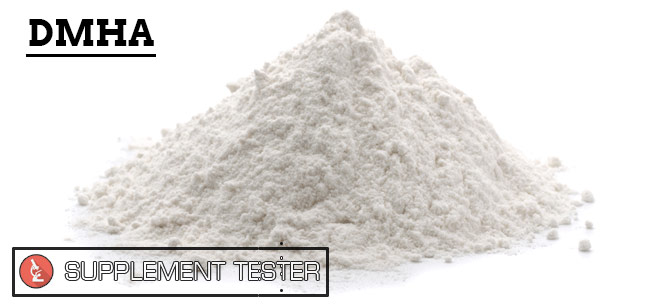What Is DMHA?
DMHA (also known as 2-Aminoisoheptane or Octodrine), has become a popular ingredient in pre workouts and fat burners since the start of 2017. We noticed this growing trend when reviewing new products, and it seems you have too – since many of you requested this article.
Simply put, DMHA is a stimulant that’s believed to improve your energy levels. It’s extracted from the bark of the Juglans Regia Tree (AKA. English Walnut Tree), found in regions stretching from the Balkans to China.
Why It’s Used In Supplements
This ingredient is structurally very similar to DMAA. To put this into perspective, we’ve created a image with DMHA and DMAA side-by-side below:
But DMHA being similar to DMAA is actually a bad thing. Here’s why: DMAA was banned in the UK and Canada after causing consistant side effects (we’ll expand on this in the section below).
Before DMAA was banned, companies were using it to make their products more powerful. As a result, they began searching for alternatives to use instead.
This is exactly why DMHA used in both pre workout and fat burner supplements – it’s considered as the ‘perfect’ replacement for DMAA (similar to how Synephrine was used as the replacement for Ephedrine).
How Does It Work?
As you know with caffeine, stimulants are great for raising your energy levels; stimulants give you that ‘push’ you need when on a calorific deficit, and also to smash a gym session.
Simply put, DMHA works by boosting dopamine and noradrenaline, which is thought to result in longer lasting energy boosts [1].
However, there’s a reason why caffeine remains the most popular stimulant on the market – because it’s tried-and-tested to be safe and effective [2].
The problem with this new stimulant, is that DMHA isn’t proven to be safe; there hasn’t been enough research conducted on it, as of 2017.
DMHA’s Optimal Dosage
As DMHA hasn’t been extensively researched, there’s not enough proof to believe a certain dosage will definitely be safe and effective.
Some believe that a dosage of 100mg is the ‘sweet spot’ for DMHA – but as we’ve mentioned, this isn’t certain to be an effective dosage, or keep you safe from side effects.
Side Effects
In terms of side effects, DMHA comes with the usual potential side effects that stimulants can cause – jitters and energy crashes.
However, DMHA’s also been reported to cause:
- Rapid Heartbeat
- High Blood Pressure
- Shortness of Breath

Any Alternatives?
We briefly mentioned that caffeine is the safest and most reliable stimulant on the market. Well, we’ll expand on this here.
Caffeine
Caffeine is one of the most traded commodities in the world, commonly found in countless products – ranging from tea & coffee, to even chocolate.
And there’s a very good reason for this; when consumed in sensible dosages (under 300mg for a pre workout, and under 100mg per capsule in a fat burner), it can deliver numerous benefits.
These include:
- Energy Boosts
- Improved Strength
- Enhanced Endurance
- Increased Focus
Not only will you experience these benefits to improve your sporting performance, but you’ll also stay safe from side effects. For this reason, caffeine is one of the best ingredients you can find in supplements.
Conclusion
Ultimately, DMHA is a new ingredient that hasn’t been proven to work or be free from side effects.
We always recommend that you avoid any unreliable ingredients – what’s the point of taking an unreliable nutrient when there’s plenty of tried-and-trusted ingredients available.
Bottom Line: Only time will tell whether DMHA will ever reach the heights of reputable stimulants such as Caffeine. However, as DMHA is similar in structure to DMAA (which has been banned after causing harmful side effects), we’re not convinced it’ll take over as the #1 stimulant in supplements.
See The Best
– Pre Workout Ingredients Here –
or
– Best Fat Burner Ingredients Here –
References
[1] Rasmussen, N., & Keizers, P (2015) History Full Circle: Novel sympathomimetics in supplements; Drug testing and analysis. Retrieved from http://onlinelibrary.wiley.com/doi/10.1002/dta.1852/abstract
[2] Bill J. G, Susan C. S, Sheila L. T (2015) Multi-ingredient, Caffeine-containing Dietary Supplements: History, Safety, and Efficacy. February 1, 2015; Vol 37, Issue 2, Pages 275-301. DOI: http://dx.doi.org/10.1016/j.clinthera.2014.08.012.
